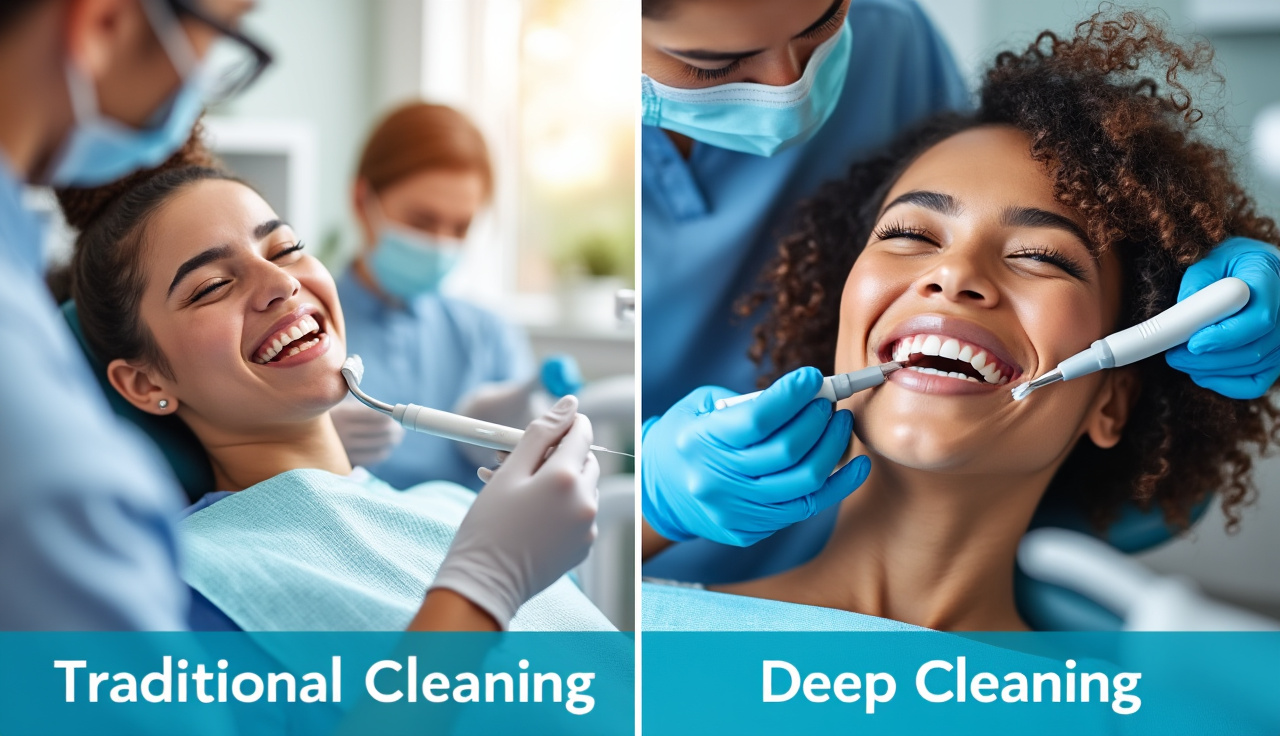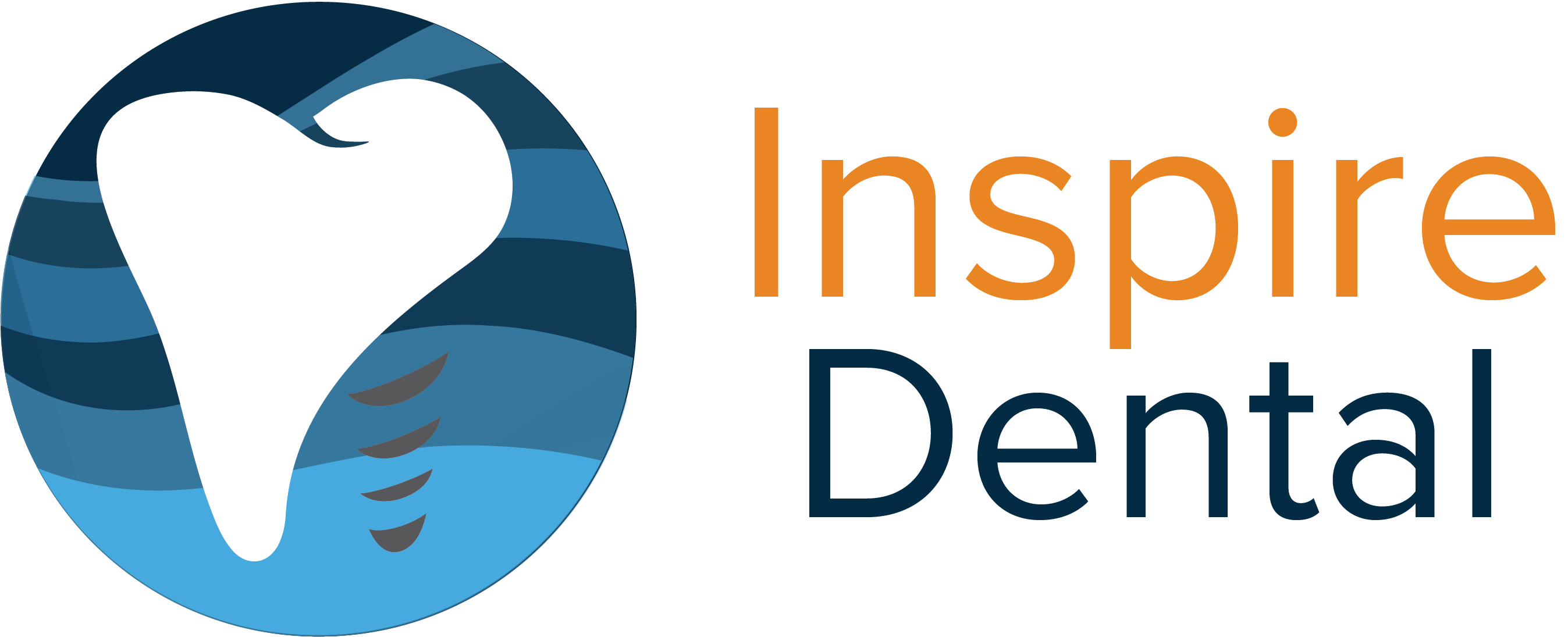Deep teeth cleaning costs between $150-$350 per quadrant with insurance, or $800-$1,200 total without coverage. Most patients need 2-3 hours for the procedure and about 24-48 hours for recovery.
Here’s the thing: Regular cleanings don’t always cut it.
Think of it like deep cleaning your house vs. regular dusting. Traditional cleanings only tackle what’s above your gum line, while deep cleaning gets rid of harmful bacteria hiding underneath. A 2023 dental survey shows 93% of patients saw major improvements in their gum health after the procedure.
Want to know what makes deep cleaning worth every penny? I’ve helped thousands of patients understand this procedure, and I’ll walk you through everything – from the latest tech being used to real recovery stories from actual patients. Plus, I’ll show you how to make your results last twice as long as the average patient.
Understanding the True Cost-Benefit Analysis of Deep Cleaning

Want to know the real deal about deep teeth cleaning costs in 2023?
A deep teeth cleaning isn’t your regular dental cleaning. It’s like giving your teeth and gums a super-detailed wash that goes below your gum line.
Here’s the truth: The cost hits different depending on where you live.
Real Cost Breakdown for Deep Cleaning (2023)
In big cities, deep cleaning typically costs $500-800 for your whole mouth. Smaller towns? You’re looking at $300-600.
But here’s something most dentists won’t tell you:
- Chain dental offices (like Aspen Dental) often charge 20-30% less than private practices
- Most dental insurance covers 50-80% of the cost
- Many local dentists offer monthly payment plans starting at $50
The Money-Saving Benefits
Think of deep cleaning as changing your car’s oil. Skip it, and you’ll pay way more later.
Getting a deep cleaning now helps you dodge these expensive problems:
- Root canals ($1,000-1,500 each)
- Gum surgery ($1,000-3,000)
- Tooth loss ($3,000-4,500 per implant)
Smart money move: Ask about same-day treatment discounts. Many dental clinics knock off 5-10% if you clean your whole mouth in one visit.
Most dental offices also offer free consultations. Use these to compare prices and payment options before committing.
Remember: Cheaper isn’t always better. Look for dentists with good reviews and modern dental technology – they might cost more upfront but usually do better work.
The Technology Revolution in Deep Cleaning

Want to know what’s really cool about modern dental cleanings? The old days of lengthy, uncomfortable cleanings are history.
Here’s the deal: New tech has transformed deep teeth cleaning into a quick, nearly painless process.
Today’s dental clinics use ultrasonic scaling equipment that’s like a tiny power washer for your teeth. Instead of manually scraping away tartar buildup, these smart tools use high-frequency vibrations to blast away gunk while being super gentle on your teeth.
But that’s not even the best part:
AI-Powered Precision Cleaning
AI-assisted cleaning is changing the game. These smart systems map your mouth in 3D and guide dentists to spots that need extra attention. Think of it like GPS for your teeth – it shows exactly where the plaque is hiding.
What used to take 90 minutes now often takes just 30-45 minutes. And the results? Way better than before.
Modern vs Traditional Cleaning Methods
Old way:
– Manual scraping with metal tools
– Lots of pressure needed
– Often uncomfortable
– Could miss problem areas
New way:
– Ultrasonic scaling does the heavy lifting
– Gentle vibrations remove tartar
– Computer-guided precision
– Gets into spots manual tools can’t reach
The best part? These new tools are actually better at preventing gum disease and keeping your oral health in top shape. Plus, you’ll spend less time in the dentist’s chair and more time showing off your clean smile.
Remember: While the tech is amazing, you still need regular cleanings every 6 months to keep your smile healthy. But now, those appointments are something you might actually look forward to!
What Makes a Deep Cleaning Actually “Deep”?

Ever wonder why dentists call it “deep cleaning” instead of just regular cleaning? Here’s the deal:
A deep teeth cleaning goes way beyond what your regular 6-month cleaning does. It’s like the difference between dusting your furniture and moving everything to clean underneath it.
During a deep cleaning, your dentist uses special tools to clean below your gum line – places your toothbrush and floss can’t reach. Think of it as getting under the hood of your car instead of just washing the outside.
Here’s what makes it truly “deep”:
- Ultrasonic scalers that blast away stubborn tartar buildup
- Special probes that measure how healthy your gums are
- Microscopic analysis to check for harmful bacteria
- Root planing tools that smooth out rough spots on your tooth roots
Advanced Cleaning Techniques Explained
Your dentist isn’t just using fancy toothbrushes. They’re using high-tech equipment like:
- Laser therapy that zaps away infected tissue
- Digital mapping to spot problem areas
- Specialized irrigation systems that flush out bacteria
- Microscopic cameras that show what’s happening under your gums
The Science Behind Deep Cleaning
But here’s what really sets it apart:
Before starting, your dentist will:
– Take x-rays to see what’s happening below your gums
– Do bacterial testing to identify harmful organisms
– Create a custom treatment plan based on your specific needs
Think your teeth might need more than just a regular cleaning? Most dental clinics near you offer free consultations to check if you need a deep cleaning.
Remember: While regular cleanings are like maintenance, deep cleanings are more like repairs – they fix problems before they get worse.
Choosing Between Traditional vs. Deep Cleaning

Ever wonder why dentists sometimes recommend a deep cleaning instead of your regular cleaning? Here’s the deal:
A traditional cleaning is like giving your teeth a good shower. But a deep cleaning is more like power washing your house – it gets into places regular cleaning can’t reach.
Let me break this down in super simple terms:
Traditional cleaning is perfect when your gums are healthy and you just need the usual plaque and tartar removed. Think of it as regular maintenance, like changing your car’s oil.
But sometimes your mouth needs extra help. That’s where deep cleaning comes in.
Medical Indicators for Deep Cleaning
Your dentist might recommend a deep cleaning if they spot these warning signs:
- Periodontal pockets deeper than 4 millimeters (that’s when your gums start pulling away from your teeth)
- Bleeding gums when you brush or floss
- X-rays showing bone loss around your teeth
- Visible tartar buildup below your gum line
- Persistent bad breath that won’t go away
The biggest red flag? Those periodontal pocket measurements. When your dentist pokes around your gums with that tiny ruler, they’re checking these pockets. Normal pockets are 1-3 millimeters deep. Anything deeper means it’s time for a deep clean.
Think of it this way: if you see a little mold in your shower, a quick wipe-down works fine. But if that mold gets under the caulking, you need to bring in the big guns. Same goes for your teeth – when bacteria get under your gums, you need something stronger than a regular cleaning.
Warning signs you shouldn’t ignore:
– Gums that look bright red instead of pink
– Teeth that feel loose
– Gums that bleed easily
– New spaces appearing between your teeth
– Changes in how your bite feels
Don’t wait until these symptoms get worse. Early treatment with deep cleaning can stop gum disease in its tracks and save your teeth from serious trouble down the road.
Post-Procedure Recovery: What No One Tells You

Let’s be real: recovering from a deep teeth cleaning isn’t like bouncing back from a regular cleaning.
Here’s the deal: your mouth needs time to heal, and knowing what to expect makes a huge difference.
Hour-by-Hour Recovery Timeline
First 2 hours: Your face might feel numb and tingly (like when you’ve had too many popsicles). Stick to water and avoid hot drinks.
2-4 hours: The numbness starts wearing off. You might feel some teeth sensitivity – that’s totally normal! Pro tip: breathe through your nose to avoid that zingy feeling from cold air.
4-12 hours: Your gums might feel tender and look a bit puffy. Think of it like a tiny workout for your mouth – some soreness is expected.
12-24 hours: This is when most people start feeling more like themselves. But keep babying those gums!
Getting Back to Normal Life
Want to know when you can get back to your favorite foods? Here’s the scoop:
- First 24 hours: Stick to soft foods like yogurt, smoothies, and mashed potatoes
- Days 2-3: You can start eating normal foods, but avoid anything super crunchy
- Days 4-7: Most people are back to 100%
Quick tip: Keep using warm salt water rinses 3 times a day – it’s like a gentle hug for your gums!
Remember those oral hygiene habits your dentist always talks about? Now’s the time to be extra careful with them. Brush super gently with a soft-bristle toothbrush and don’t skip the flossing – just be extra gentle around tender spots.
Need to manage sensitivity? Try this:
– Use sensitive toothpaste
– Skip ice-cold drinks for a few days
– Take over-the-counter pain meds if needed
Most people are totally back to normal within a week. But if you’re still feeling iffy after that, give your local dentist a call – that’s what they’re there for!
Making Your Deep Cleaning Results Last Longer

Here’s the deal: A deep teeth cleaning can make your mouth feel amazing, but keeping those results isn’t magic – it’s all about what you do next.
Think of your teeth like a newly detailed car. Sure, it looks great right after the wash, but without regular maintenance, it won’t stay that way for long.
Creating Your Personal Maintenance Plan
Your gum health decides how often you need care. If you’ve got healthy gums, seeing your dentist every 6 months works great. But if you’re dealing with gum disease, you might need check-ups every 3-4 months.
Want to know what really works? Studies show that mixing professional teeth cleaning with solid at-home care gives you the best results. The magic ratio is 20% dentist care, 80% your own effort.
Proven Tools for Long-Lasting Results
Research backs these game-changers:
- An electric toothbrush with pressure sensors (reduces plaque by 21% more than manual brushing)
- Water flossing devices (removes up to 99.9% of plaque from treated areas)
- Soft-bristle toothbrushes (protects your gums while cleaning effectively)
- Prescription-strength fluoride toothpaste (recommended by the American Dental Association)
Pro tip: Using a tongue scraper can cut bad breath bacteria by 75%. Pretty cool, right?
The best part? Keeping up with these habits doesn’t just keep your teeth clean – it can save you money. Studies show good maintenance after a deep cleaning can prevent the need for another deep clean for up to 5 years.
Remember: Your mouth will thank you for every minute you spend on these simple habits!
Ready to Transform Your Smile? Here’s Your Next Step

Here’s the deal: deep teeth cleaning isn’t just another dental procedure – it’s your ticket to a healthier, more confident smile. And I’ve seen firsthand how it’s changed my patients’ lives right here in Ottumwa.
Look, I know you want the best care for your family’s dental health. That’s why at Inspire Dental, we make it super easy to get started. Our team brings together faith, expertise, and cutting-edge technology to give you the gentle, thorough care you deserve.
Ready to take the first step? Simply fill out our quick contact form with your name and info. We’ll get back to you fast to schedule your consultation. Don’t wait until gum problems get worse – let’s work together to protect your smile today.
Your healthier smile starts here: Visit our contact page at [website] or call us at [phone]. We’re here to answer all your questions about deep cleaning and help you make the best choice for your dental health.
